World records in swimming. Basic types and styles of swimming. Middle distance training
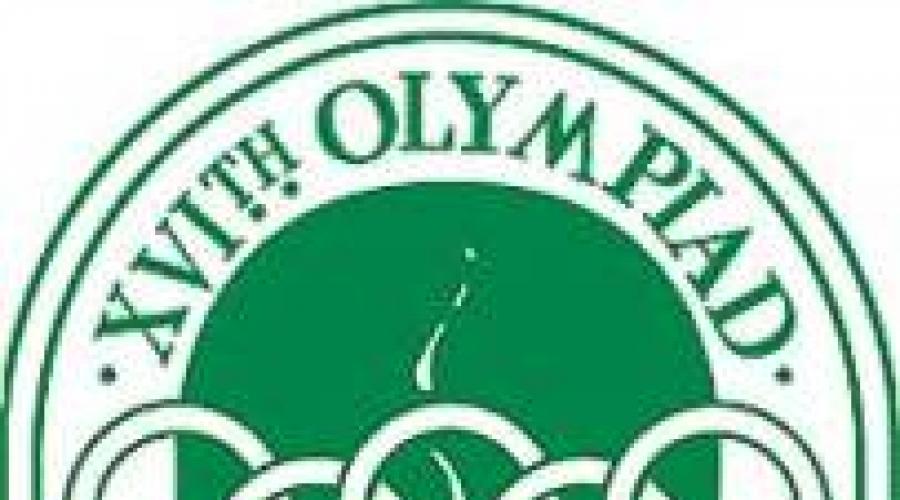
Olympic Games - 1960. Rome (Italy)
| The games of the XVII Olympiad were broadcast on television for the first time. 5,348 athletes from 83 countries took part in Rome. 150 sets of medals were played in 17 sports. Soviet athletes won 43 gold, 29 silver and 31 bronze medals. A delegation of Soviet swimmers, consisting of 13 men and 10 women, was sent to the Games in Rome. It included Olympians Gennady Androsov, Vitaly Sorokin, Boris Nikitin, Gennady Nikolaev and Lyudmila Klipova who competed in Australia, European champions Leonid Kolesnikov (Moscow), Igor Luzhkovsky (Leningrad), Leonid Barbier (Kiev), European championship medalists Larisa Viktorova (Leningrad) and Ulvi Voog (Tallinn), as well as young athletes - breaststroke swimmers Georgy Prokopenko (Lvov), Arkady Golovchenko (Moscow), Eve Maurer (Tallinn) and Lyudmila Korobova (Moscow); freestyle crawlers - Sergey Tolstoplet (Kharkov), Marina Shamal, Galina Sosnova ( both - Moscow) and Irina Lyakhovskaya (Leningrad), butterfly players Valentin Kuzmin, Grigory Kiselev, Valentina Poznyak (all - Moscow) and 3inaida Plishkina-Belovetskaya (Gorky, Moscow), young national backstroke champion Veiko Siimar (Tallinn). |
The average age of the team athletes was 22.5 years, the female athletes - 20.5. The team leader was Zakhary Pavlovich Firsov, the senior coach was Honored Master of Sports of the USSR Vladimir Fedorovich Kitaev.
The Olympic competitions were held in Rome's new 50-meter summer swimming pool. 402 swimmers from 45 countries took part in them.
Soviet swimmers remained in Rome without medals, scored only 5 points (2 times less than in Melbourne) for two fifths (Leonida Barbiera in the 100 m backstroke and the 5th place in our men's 4x100 m medley relay) and one sixth place ( Zinaida Belovetskaya -100 m butterfly). Compared to Melbourne, they dropped four places in the unofficial team rankings; The worst performers were the crawlers.
Olympic Games - 1956. Melbourne (Australia)
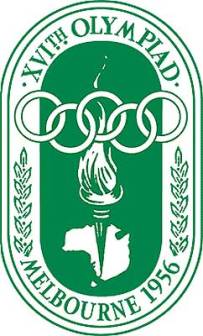 |
3184 athletes from 67 countries took part in the Games of the XVI Olympiad. 145 sets of medals were played in 17 sports. Having won 98 medals, Soviet athletes at the Games in Melbourne took first place in the team event. During the 4-year period separating the Games in Helsinki and Melbourne, FINA registered more than 100 world records set by swimmers from 12 countries. A particularly large number of world records were updated during that period by the hosts of the Olympics - Australian rabbit climbers Murray Rose, Dawn Fraser and Lorraine Krepp, who surprised the sports world with a whole cascade of outstanding achievements. The Olympic competitions were held in Melbourne in a new 50-metre indoor swimming pool. In 13 swimming events, the Olympic championship was competed by 242 athletes (144 men and 98 women) from 34 countries - significantly less than at the Games in London and Helsinki. |
This was due to the great difficulties associated with the flight to Australia. Only the USA and Australia were represented in Melbourne by full swim teams (48-50 swimmers each); Great Britain, the combined team of Germany, France, Japan and Hungary each had 16-18 swimmers, the rest of the countries had fewer.
Before the Games in Melbourne, the USSR Swimming Federation established strict standards that only 10 Soviet swimmers were able to fulfill, among them only one participant of the previous Olympic competitions Lev Balandin, the rest were debutants: Vitaly Sorokin (Leningrad), Boris Nikitin (Tbilisi), Gennady Nikolaev and Vladimir Struzhanov (both Moscow), Gennady Androsov and Farid Dosaev (both Lvov), Kharis Yunichev (Sochi), Igor Zaseda and Lyudmila Klipova (both Kyiv). Together with these athletes, Zakhary Pavlovich Firsov (team leader), Honored Masters of Sports of the USSR V.F. Kitaev (senior team coach) and K.I. Aleshina (team coach) went to Melbourne.
The first Olympic medalist in history domestic swimming became Kharis Yunichev - he won bronze at a distance of 200 m breaststroke. The participants of our 4x200 m relay race also received medals of similar value, although they were world record holders at this distance, nevertheless, losing more than 10 seconds to their own record time, they became only third, behind the Americans and Australians. Our swimmers finished seventh in the overall standings with two bronze medals.
Medals of the USSR national swimming team,
won at the Games of the XVI Olympiad in 1956 in Melbourne (0-0-2):
The FINA Congress, which met in Melbourne, adopted a number of decisions aimed at further clarifying the rules of swimming sports: on the registration of world records from May 1, 1957 only in long pools (50-meter or 55-yard); on the exclusion of further registration of world records for 100 and 400 yards, one mile (1760 yards), in the 4x100 and 4x200 yard relays; on the prohibition of diving during breaststroke swimming (after the start, athletes were allowed to do no more than one stroke each with their arms and legs without breathing in breaststroke swimming).
At the same congress, a new composition of the FINA Bureau was elected by secret ballot. The Dutchman J. de Vries became president, the vice-presidents were the Australian B. Phillips, the Japanese K. Abo, the Frenchman A. Lemoine and the Italian V. Percuoco, general secretary- Swede B. Sahlfors, honorary treasurer - Englishman G. Fern, members of the bureau - B. Bayer (Germany), Z. Firsov (USSR), D. Havelang (Brazil), L. Johnson (USA) and B. Rajki (Hungary ). For the first time, representatives of the Soviet Union were included in the international technical committees of FINA: in swimming - V. Kitaev, in water polo - A. Kistyakovsky and in diving - S. Efimova. For the first time, an independent International Synchronized Swimming Committee was formed.
Olympic Games - 1952. Helsinki (Finland)
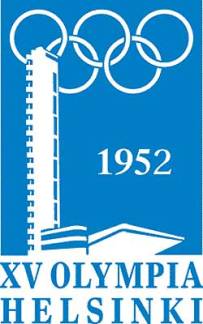 |
Athletes from the Soviet Union took part in the games. 149 sets of medals were competed in 17 sports. 4,955 athletes from 69 countries took part in the games. Held at the Olympic pools in Helsinki, 917 swimmers, divers and water polo players from 49 countries took part in the competition. Most full lineups teams were sent to Helsinki UK, Hungary, Holland, USA, Soviet Union, France, Sweden and a number of other countries. For the first time, Venezuela, Vietnam, Guatemala, Indonesia, Israel, Poland, Romania, Singapore and Saarland took part in the Olympic swimming competitions. The first Soviet Olympic swimming team included 18 athletes (15 men and 3 women): Crolists - Leonid Meshkov (Moscow), Lev Balandin (Gorky, Moscow), Endel Edasi (Tallinn), Vladimir Skomorovsky (Moscow), Victor Drobinsky (Moscow), Vasily Karmanov (Moscow), Anatoly Raznochintsev (Krasnodar), Endel Press (Tallinn) ) and Vladimir Lavrinenko (Sukhumi, Moscow); breaststroke swimmers - Pyotr Skripchenkov (Moscow), Vladimir Borisenko (Moscow), Yuri Kurchatov (Leningrad), Vera Kostina (Moscow), Roza Zenziveeva (Moscow) and Maria Gavrish (Vinnitsa, Kyiv); representatives of backstroke swimming - V. Soloviev (Moscow), Vladimir Lopatin (Moscow) and Leonid Sagaiduk (Leningrad). |
At the Games in Helsinki, the Soviet swimming team failed to win medals. The most successful performance was that of the repeated champion and national record holder in breaststroke swimming, Maria Gavrish; she was the first and then only athlete who managed to win the honorable right to start in the final swim and take 6th place in it.
During the days of the Olympic competitions, the next FINA congress was held, in which delegates from the USSR participated for the first time. Congress decided to split the butterfly and breaststroke into two independent way swimming and the beginning of the registration of world records in them on January 1, 1953 at two distances - 100 and 200 m for men and women. Two new types of swimming were also approved for men and women - the 400 m individual medley and the 4x100 m medley relay. At the same congress, it was decided to supplement the Olympic competition program with two butterfly swimming distances: for men - 200 m, for women - 100 m - and cease, as of January 1, 1953, the registration of world records for a number of minor and no longer important swimming events and distances: 500 yards and 500 m freestyle, 200 yards breaststroke, 150 yards backstroke, 300 m individual medley, medley relays 3 X 100 yards and 3 X 100 m. The Congress elected a new FINA Bureau headed by President Mario Negri (Argentina).
Olympic Games - 1948. London (UK)
|
|
The Games of the XIV Olympiad take place after the war, in a city dilapidated by bombing. 59 countries and 4,099 athletes took part in the games. In 17 sports, 136 sets of medals were competed. The best athlete Olympic Games in London - the Dutch athlete Fanny Blankers-Queen was recognized, having won 4 gold medals in the running program. 528 swimmers, divers and water polo players from 37 countries came to London, including swimmers from almost all countries of Europe, India and Pakistan, Australia and New Zealand, Canada and the USA, Argentina, Mexico, Brazil, Colombia and other countries Latin America, Bermuda, Egypt and Syria. |
Over the 12-year Olympic period, the butterfly not only rehabilitated itself after the failure in Berlin, but almost completely replaced the breaststroke. This became clear after the very first swims at the London Olympic Games, in which most of the winners used the butterfly. The gold medal was won by the American Joseph Werder, who by that time had become the world record holder at this distance. All gold medals awarded among men went to American swimmers.
In the women's competitions, athletes from America, Denmark and Holland were in the lead. In the 100m freestyle, the gold medal was awarded to Denmark's Greta Andersen, and in the 400m to America's Anne Curtis. She also helped the US team win gold medals at the last, decisive stage in the 4x100 m relay. Victories in London brought Curtis worldwide fame. She was greeted in the United States as a national hero. Fame turned the young American's head. Like many other famous American athletes, she was lured by lucrative contracts from film studios. After the London Olympics, she left sports and became a professional actress.
Olympic Games - 1944.
The XIII Summer Olympic Games, by decision of the IOC adopted in June 1939, were planned to be held in 1944 in London. London was ahead of Rome, Detroit, Lausanne, Athens, Budapest, Helsinki and Montreal in the fight for the right to host the Games. Due to the outbreak of World War II, the Games were cancelled. London hosted the first post-war Games in 1948, and received this right without elections.
Olympic Games - 1940.
The XII Summer Olympic Games were scheduled to be held from September 21 to October 6, 1940 in Tokyo. Due to Japan's refusal, the IOC moved the Games to Helsinki in 1938, where they were to be held from July 20 to August 4, 1940. Following the outbreak of World War II in 1939, the Games were finally canceled by a letter from Bayeux-Latour to all IOC members dated 2 May 1940.
Olympic Games - 1936. Berlin (Germany)
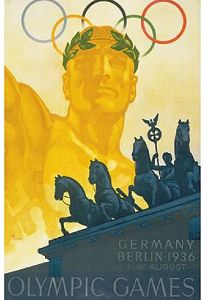 |
The tradition of the Olympic torch relay was born: the flame was carried from Olympia by runners passing the torch like a relay baton. At that time, Adolf Hitler was in power, who hoped to increase his authority on the world stage with the help of games; promote National Socialism and the superiority of their race. But, thanks to the successful performance of black American athletes, in particular Jesse Owens, who won 4 gold medals (in the 100 and 200 m, long jump and relay) - Hitler’s plans were thwarted! 4070 athletes from 49 countries took part in the Games. 129 sets of medals were competed in 19 sports. Compared to all previous Olympic swimming competitions, the starts in Berlin attracted the largest number of participants - about 800 swimmers from 32 countries. |
For example, in the 100m freestyle swimming, 45 participants from 23 countries competed for the first time among men; for women, 33 participants from 14 countries. The championship in the 4x200m freestyle relay was competed by men's teams from 18 countries. This influx of participants was largely explained by the rapid growth of achievements in swimming characteristic of the thirties. In Hungary, a new European champion in the sprint crawl, Ferenc Csik, emerged, in Holland - world record holders Willy den Ouden and Rie Mastenbroek. Willie den Ouden was especially distinguished. By mid-1936, she held all the world records in short and medium distance freestyle swimming. Her world record for 100 m freestyle - 1:04.6, set in a 25-meter pool in Amsterdam on February 27, 1936, turned out to be historical: for exactly 20 years in the pools of five continents, the strongest athletes in the world tried in vain to improve it.
The Berlin Games revealed a new backstroke champion, American Adolf Kiefer, trained by one of the outstanding American coaches, R. Kiput. Adolf Kiefer performed turns masterfully. Before him, swimmers did them slowly, breaking the rhythm of swimming in a supine position. Adolf Kiefer mastered a new turning technique, developed by R. Kiput - somersault: swimming up to the turning board, he immediately performed a back somersault and made a strong push from the wall. This technique went down in the history of competitive swimming as the “Kiefer turn.” At each such turn, the swimmer received an advantage of up to 1 second.
The very first starts of the swimmers at the Games of the XI Olympiad brought completely unexpected results. After a 30-year break, the Olympic victory in the sprint (100 m freestyle) was again won by a European: the Hungarian freestyle climber Ferenc Csik, developing a rapid pace, was the first to reach the finish line, ahead of the fastest swimmers of Japan and America.
The world's strongest breaststroke and butterfly swimmers met in the 200m breaststroke Olympic final. Here there was not only a fierce struggle between swimmers from several countries, but also a fundamental test of the effectiveness of two various styles swimming And when the start was given, for the first time in the history of the Olympic Games, the usual silence of the sliding breaststroke was broken by the violent movements of the fluttering butterfly used by the American swimmers. From the very first meters, American butterfly players John Higgins and John Kesley took the lead. They were the first to complete the turn and broke away from the rest of the group of finalists by several meters. But the bold start did not bring success. After the first half of the distance, the movements of the American swimmers became heavy and ineffective. They no longer fought, but only “swimmed” the distance and as a result did not receive a single medal. It was a complete failure of the butterfly.
The gold medals of the Olympic champion in the 100 and 400 m freestyle were won for the first time by the representative of Europe, the Dutchwoman Rie Mastenbroek.
As a result of all the competitions in Berlin, there was full shift Olympic swimming champions. Of the 33 medals won in men's and women's swimming competitions, 11 were won by Japan, 8 by the USA, 5 by Holland, 4 by Germany, 2 each by Hungary and Denmark, 1 by Argentina. Among the Olympic medalists this time there were no swimmers from Australia, Great Britain and Sweden, who had previously consistently been among the strongest.
Olympic Games - 1932. Los Angeles (USA)
At the same time, the result shown by 14-year-old Kusuo Kitamura (the youngest champion in the history of men's Olympic swimming) in the 1500 m freestyle (19 min 12.4 sec) will be surpassed at the Olympic Games only 20 years later, and in the relay the Japanese swimmers improved Olympic record from four years ago (updating the world record) by almost 40 seconds!
Japanese specialists in relation to national characteristics physical development(short stature, short limbs) modified the crawl swimming technique: increased the intensity and pace of arm strokes and leg movements. This required enormous endurance from the swimmers, and the Japanese athletes persistently developed it through many hours of daily swimming. To achieve better mobility in the joints, the Japanese developed special sets of gymnastic stretching exercises and performed them on land before swimming. Thus, they were the authors of special swimmer gymnastics, which in the future found wide application in methods of training swimmers from different countries. To increase endurance during medium and long distance swimming, Japanese coaches, in collaboration with doctors and scientists, introduced the use of oxygen inhalations before the start, which helped to delay “oxygen starvation” in the body. Thanks to such preparation, Japanese swimmers won 11 of the 18 medals won in men's competitions (including 5 gold). American athletes received 4 medals, representatives of France, Hungary and the Philippines - 1 each.
Having been defeated in men's swimming, the Americans, as in previous years, performed excellently in women's competitions, in which Helen Madison distinguished herself the most, winning 3 gold medals. Out of 15 prizes Olympic medals, played in women's competitions, US athletes won 6, Great Britain, Australia and Holland - 2 each, Japan, the Union of South Africa and Denmark - 1 each.
Olympic Games - 1928. Amsterdam (Netherlands)
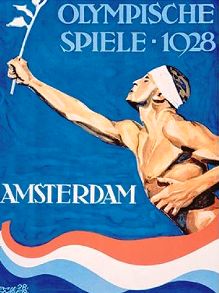 |
For the first time, athletes from the USSR took part in these games. According to ancient legend Ancient Greece, at the IX Olympic Games the tradition of lighting the Olympic flame was restored. The fire was lit from the sun, using a mirror. 2883 athletes from 46 countries took part in the competition in Amsterdam. At the Olympics, 109 sets of medals were competed in 14 sports. More than 200 people from 29 countries took part in the swimming competitions at the IX Olympics. Athletes from Japan, Egypt, Argentina, the Philippines and some other countries took part for the first time. Swimmers from all continents gathered at the Olympics globe. Russian swimmers did not take part in these Games. American Johnny Weissmuller won the 100m freestyle. Hungarian Istvan Baranyi finished second with a new European record of 59.8. He became the first European swimmer to show a result of better than 1 minute at a distance of 100 m. The bronze medal was won by Katshu Takaishi, who became Japan's first Olympic medalist. |
After his victory at the Amsterdam Olympic Games, Weissmuller no longer updated his swimming records. He left big sports for the film industry, where he starred in several films, one of which was “The Adventure of Tarzan.”
For the first time, Dutch athletes performed successfully in Olympic competitions. The best among them, Marie Brown, won the gold medal in the 100m backstroke final with a new world record and received a silver medal for 2nd place in the 400m freestyle.
Medals for first, second and third places were distributed among swimmers from 6 countries - the USA, Australia, Great Britain, Hungary, Belgium and Sweden. Among the winners of the Games of the IX Olympiad were swimmers from 12 countries - the USA, Japan, Australia, Hungary, Sweden, Germany, Argentina, the Philippines, Canada, Great Britain, Holland and the Union of South Africa. In the history of competitive swimming, there have never been such a large number of countries that have managed to train Olympic medalist swimmers. First general command place(6 gold medals) were again won by US swimmers.
Olympic Games - 1924. Paris (France)
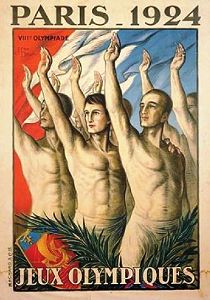 |
In honor of Coubertin's achievements, the IOC entrusted France with hosting the Olympics for the second time. This was the last Olympics led by Pierre de Coubertin. 3092 athletes from 44 countries took part in the VIII Olympic Games. In 17 types of competitions, 126 sets of gold medals were awarded. For the first time at the Olympic Games the motto appears: "Citius, Altius, Fortius!" - "Faster, higher, stronger!" For swimming competitions in the capital of France, a 50-meter summer swimming pool “Turel” was specially built, designed for 8 lanes. It was the first time that Olympic swim competitions took place in a pool of this size. The stands, located on four sides like amphitheatres, accommodated more than 5 thousand spectators. After 1924, all Olympic swimming competitions were held only in standard pools: on 8 lanes of 50 meters in length. In Melbourne, Tokyo, Mexico City and Munich - in indoor pools, in other cases - in outdoor pools. |
About 200 swimmers from 22 countries took part in the swimming tournament in Paris, including all the strongest swimmers in the world - American Johnny Weissmuller, Swede Arne Borg, Australian Andrew Charlton. Despite his age of 19, Weissmuller was then known throughout the sports world as the first athlete to swim the 100 m freestyle in less than 1 minute, and the 400 m freestyle in less than 5 minutes. Before the start of the Paris Olympics, he updated more than 20 world records in swimming at all freestyle distances - from 100 yards to 500 m. Arne Borg was the strongest freestyle swimmer in Europe. During 1922-1924. he managed to update world records in mid- and long-distance freestyle swimming about 10 times. Andrew Charlton was the world record holder in the 880-yard freestyle. The sports “duel” between these outstanding swimmers of the twenties was marked in Paris by a number of high achievements. Andrew Charlton especially distinguished himself, who managed to set a phenomenal world record for that time in the 1500 m final, exceeding by 64.8 seconds the record achievement shown by Arne Borg two days earlier. Together with Johnny Weissmuller, Andrew Charlton shared the glory of the strongest Olympians in Paris.
In women's swimming, the 100m freestyle final was especially interesting. Two world record holders, Gertrud Ederle and Marichen Weislau, as well as Ethel Lucky, a student of the then famous American coach W. Bachrach, started here. V. Bakhrakh, working on Lucky’s swimming technique, wanted to prove that women could swim well with the same crawl stroke as his student Johnny Weissmuller. And he proved it: Lucky became an Olympic champion. Another of his students, Sybil Bayer, became a backstroke champion. She was the first athlete in the world to master the backstroke to perfection.
The crawl technique demonstrated in those years by Johnny Weissmuller, Ethel Luckey, Gertrude Ederle and other American swimmers went down in the history of competitive swimming as the most economical and fastest.
Olympic Games - 1920. Antwerp (Belgium)
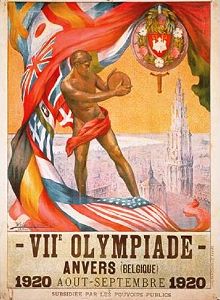 |
The next Games of the VII Olympiad took place 8 years later. Athletes (2,600 people) from 29 countries took part in the games. Athletes from Germany and their allies in World War I were not invited to the Olympics. Also, according to political reasons, the IOC did not invite athletes from Soviet Russia either. For the first time, at the games, the Olympic white flag was raised, with five intertwined rings of blue, yellow, black, green and red embroidered on it. The five rings symbolize the five continents. According to Coubertin, six colors (together with the white color of the canvas) indicate the national colors of all countries without exception. 154 sets of medals were competed in 22 sports. The 1920 Olympic competition, held in the 100-meter pool in Antwerp, featured 140 swimmers from 17 countries. Duke Kahanamok updated the world record in the preliminary heat of the 100m freestyle - 1.00.4. |
American Norman Ross excelled in the middle and long distances. Norman Ross swam freestyle in both events. He became the first Olympic champion to successfully use the improved crawl at medium and long distances. The features of his swimming technique were: a preliminary “surge” (free stretching of the arm forward before the active part of the stroke in the water); turning the head to the side right hand to inhale while carrying it over your head; light (“fluttering”) movements of the legs with alternating vertical and oblique “steps”; flat, relaxed body position in water; “clasp” of hands in work, in which the active part of the stroke began when the other hand had not yet finished it.
In the team competition, the US swimmers were out of competition, receiving more than half of all awards: including eight (out of ten) gold. The heroine was the American swimmer Ethelda Bleibtreu, who won three – out of three possible for women – gold medals (2+1), while setting three world records.
Swedish swimmers won 2nd team place for the first time (5 prizes, including 2 first). For the first time, swimmers from Finland and Belgium were among the winners. Swimmers from Canada, Australia and Great Britain each took 2 prizes. Thus, swimmers from 7 countries were among the winners.
Olympic Games - 1916.
The VI Summer Olympic Games, by decision of the IOC adopted on May 27, 1912, were planned to be held in 1916 in Berlin. The German capital won the right to host the games, leaving behind the African city of Alexandria, the capital of the Netherlands Amsterdam, the capital of Belgium Brussels, the second capital of Austria-Hungary Budapest and the industrial city of the United States Cleveland.
Due to the outbreak of World War I, the games were cancelled. A new stadium in Berlin was already ready for these games. Despite the fact that these sixth games were cancelled, the next games - in 1920 - were assigned the next number - 7.
Olympic Games - 1912. Stockholm (Sweden)
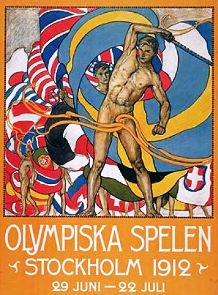 |
About 2,410 athletes from 28 countries participated in the Games of the V Olympiad, among whom 103 sets of medals were competed. The Swedes carefully prepared for the competition - they built a new stadium, equipped with a photo finish and an electronic clock. Modern pentathlon appeared in the Olympic program. In 1906 - Following the ancient tradition, the IOC decided to hold an arts competition at the Olympic Games. For the first time in Stockholm, works of literature, music, painting, sculpture, and architecture dedicated to the Olympic movement were presented. At the Stockholm Olympic Games, swimming competitions were held in a 100-meter-long summer pool. About 100 athletes from 16 countries took part in them. For the first time, Russia, Finland and Norway sent their swimmers. |
The team of Russian swimmers and divers consisted of about 20 students from the Shuvalov swimming school, led by well-known swimming champions in Russia Pavel Avksentiev, Georgy Baymakov, Viktor Baranov, Nikolay Voronkov, Georgy Kulberg. Having no experience of participating in such major international competitions as the Olympic Games, Russian swimmers were unable to compete with experienced athletes from other countries. None of the Russian Olympic debutants managed to win the right to participate in at least one of the semi-final heats.
The program of the Stockholm Olympic Games featured the debut of women's swimming, where Australian and American athletes excelled. The first Olympic champion in the 100-meter freestyle was Fanny Durek (Australasia - a joint team of Australia and New Zealand). In the preliminary heat, she set a world record of 1:19.8, and in the final she swam 2.4 seconds worse, which did not prevent her from becoming an Olympic champion. Fanny Durek was the first athlete to demonstrate the Australian crawl.
By the beginning of the Olympic Games in Stockholm, the record for the 100 m freestyle belonged to Charles Daniels - 1:02.8, set in a short (25-yard) pool in New York. At that time, FINA Rules allowed world records to be registered in any pool, starting from 25 yards in length. Only when swimming more than 400 m, a world record could only be recorded if it was shown in a long pool - at least 50 yards. (From May 1, 1957, according to a decision by FINA, world records at any distance could only be set in 50-meter and 55-yard pools.) Due to the fact that it is easier to achieve record speeds in a short pool due to the greater number of turns (per Each turn, due to a quick slide after an energetic push from the wall, the swimmer gains 0.4-0.5 seconds), athletes strived to conduct record swims in short 25-yard pools. However, FINA rules required Olympic swimming competitions to be held in pools 50 and 100 m long. Therefore, until 1957, participants in Olympic competitions were relatively rarely able to update world records.
The fastest swimmer in the world at the Olympic Games in Stockholm was Duke Kahanamoku, a Hawaiian by birth, a resident of Honolulu (Hawaii Islands), but who competed for the US team. Already in the semifinals, he updated the world record of Charles Daniels in the 100 m freestyle, and in the final he won the gold medal by 1.2 seconds.
The Hawaiian Duke Kahanamoku was the innovator of a special crawl technique, which the Americans took as the basis for the creation (a few years later) of the “American crawl”, which dominated for almost half a century in all swimming pools of the world. Kahanamoku grew up in the Hawaiian Islands and often watched as fishermen and pearl hunters warded off sharks by performing quick kick movements that created fountains of spray. For each hand stroke, Kahanamoku had time to take two “steps,” and for a full cycle of hand movements, four. This was already a “four-beat crawl”. Before him, the world record holder in crawl swimming, Charles Daniels, swam in short bursts, raised his head high to inhale, stomped his feet, and made short strokes with his hands. The Kahanamoku crawl was smoother, the athlete did not lift, but turned his head to inhale, made extended strokes with his hands, and while performing movements with his legs, hit them on the surface of the water weaker than Charles Daniels. The Kahanamoku rabbit was recognized by experts as the most beautiful and fastest (for that time) when swimming short distances.
In Stockholm, the Trejen style continued to dominate the middle and long Olympic distances, but in the modernization of the Canadian swimmer George Hodgson. The Canadian mastered soft hand strokes better than his British predecessors; He performed scissor-shaped closures of the legs almost in a horizontal plane and reduced the “sway” of the body in the water to a minimum. Thanks to these improvements " English style“He updated world records at distances of 400 and 1500 m freestyle. In the 1500m final, George Hodgson beat Englishman John Hetfield, a representative of the old Treadmill style, by almost 50m. The world records set by Hodgson in Stockholm were the last for the treadmill style.
The best team results were shown at the Games of the V Olympiad by swimmers from Germany, Australia and Great Britain. They shared gold medals with swimmers from the USA and Canada.
Olympic Games - 1908. London (UK)
Before the start of the Olympic starts, FINA reviewed and approved competition rules that were uniform for all countries, and also approved as the first world records the results shown before the London Games by Zoltan Halmai (Hungary), Charles Daniels (USA), Frederic Line (Australia) and some other athletes .
The competitions were held in a 100-meter summer pool, which had starting tables, turning boards, dividing lanes, special places for judges, rest rooms for swimmers, medical office etc. More than 50 foreign swimmers from 14 countries, including the USA and Australia, arrived in London. Some distances were played out with a large number of participants. For example, 34 athletes from 12 countries competed in the 100m freestyle.
The London swim meets were intensely competitive. The duel between the representatives of the new method of swimming - the Hungarian freestyle Zoltan Halmai and the American Charles Daniels - was especially intense. The Hungarian was in the lead for more than two-thirds of the distance, and at the finish line he was 0.6 seconds ahead of the American, who set a new world record.
At medium and long distances, victories went to the representative English school voyages to Henry Taylor. The British also distinguished themselves in the 4x200 m freestyle relay, winning with the first world record in the history of competitive swimming. The English swimmers won the overall team victory (7 prizes out of 18, including 4 first places), far ahead of the athletes from the USA, Hungary, Australia, Germany, Canada and Sweden.
Olympic Games - 1904. St. Louis (USA)
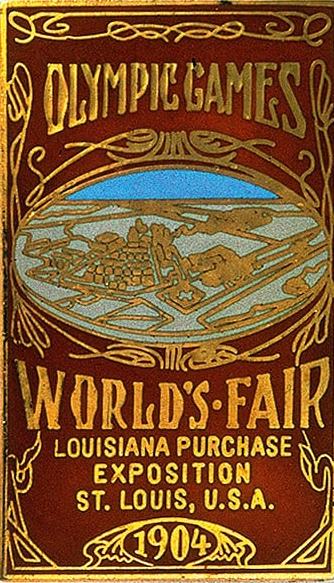 |
The Games of the III Olympiad were timed to coincide with the World Exhibition. For the first time they were held on another continent - in the USA, in the city of St. Louis. But due to this, many athletes were unable to come to the competition. Only 650 athletes from 12 countries took part in the games (compared to previous ones). 94 sets of medals were played in 18 sports. The swimming competitions at the Games of the III Olympics turned out to be of little representation: among the participants (about 50 swimmers in total) there were mainly US athletes and only a few people each from Austria, Hungary and Germany. The swimming competition program has increased to 9 disciplines. Breaststroke (at a distance of 440 yards) was included in the program for the first time. The first Olympic champion in breaststroke swimming was the German Georg Zacharias. Also, various freestyle distances were added to the program, where only Americans participated. |
The competition took place in a 50-yard pool, making it difficult to compare the swimmers' achievements with previous Games.
The Games of the III Olympiad revealed two outstanding Olympic champions - the Hungarian Zoltan Halmai and the American Charles Daniels, who demonstrated the rudiments of modern crawl in freestyle swimming. The names of Zoltan Halmai and Charles Daniels are associated with the opening of official world records. Speaking on December 3, 1905 at an international swimming competition in Vienna (in an indoor pool with 34-meter water tracks), Zoltan Halmai covered the 100 m freestyle in 1.05.8. This result was later recognized by FINA as the first world record. The next world record holder at this distance was Charles Daniels.
In the backstroke in St. Louis, the three first places went to German swimmers (led by Walter Brach). The German stayer Emil Rausch also distinguished himself at these Games, winning 2 gold medals in the longest freestyle swimming distances. Thus, in the classical swimming events, German athletes won the largest number of prize medals: 4 gold, 2 silver and 2 bronze. American swimmers won in “their” swimming events (diving and relays), in which foreigners did not participate. Hungarian swimmers took 3rd team place.
Olympic Games - 1900. Paris (France)
About 50 athletes representing 10 countries came to Paris: Australia, Austria, Belgium, Great Britain, Hungary, Germany, Holland, Denmark, Italy and the USA. The competition program was more meaningful and varied. In addition to 5 individual freestyle distances, it included (for the first time) backstroke swimming (200 m), speed diving (60 m underwater), a team wrestling event in the form of a 5x40 m freestyle relay and water polo. At the 1900 Games in Paris, there was a 200-meter steeplechase event where swimmers had to wade among submerged logs and dive under anchored boats.
An unusual type of program by modern standards is the 4000 m freestyle swim. Here, as in the 1000 m swim, there was no equal to the Englishman John Jarvis.
He had excellent command of the “over-arm” and won all freestyle swims with a clear advantage. Australian Frederic Line, who became a two-time Olympic champion, performed well. In the backstroke, the gold medal, played for the first time, was won by the German Ernst Hoppenberg. He swam breaststroke on his back. In the 60m speed diving, Frenchman Maurice de Vandeville won, also using breaststroke.
The hosts of the Games collected the most big harvest awards in swimming (5), but in terms of the number of gold medals they were behind Germany, Great Britain and Australia, which won two golds each.
Olympic Games - 1896. Athens (Greece)
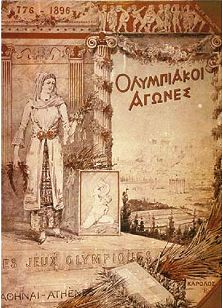 |
On April 6, 1896, in the birthplace of the Olympics, the first revived Olympic Games took place. The tradition of holding the games was renewed at the first congress of the International Olympic Committee (IOC), thanks to Baron Pierre de Coubertin. The tradition of lighting a fire at the opening of the Olympic Games was absent in those days. 14 countries and about 300 athletes took part in the games. Women were still not allowed to participate. Approximately 40 sets of medals were awarded in the competition. The games program included 9 sports: wrestling, cycling, gymnastics, athletics, shooting, tennis, weightlifting, fencing and swimming. The Games of the First Olympiad were attended mainly by Greek swimmers (naval officers, sailors merchant fleet) and only ten foreign athletes from 6 countries - a total of about 40 people. |
Athletes competed - without division into swimming styles - at distances of 100, 500 and 1200 m. There was also a swim for sailors - a hundred-meter race in clothes, where only Greek athletes participated. Swimmers competed in difficult conditions: There were no artificial swimming pools in Athens, and therefore the competition was held in primitive conditions - in an open bay, where the start and finish were marked by stretched ropes attached to floats. The competition began with swimmers entering the water from the shore. The day of the competition was cloudy, the surface of the water in the bay was choppy; the water temperature was about 13°. The judges did not have time to record all the results of the participants using stopwatches, limiting themselves to only recording the place occupied by the swimmer.
The first Olympic champion was Hungarian Alfred Hajos. Having won gold in the 100 m swimming, he repeated his success at a distance of 1200 m. In the future, Alfred Hajos (1878-1955) was a well-known civil engineer in Hungary. According to his designs, many large buildings were built in Hungary and sports facilities, including the best swimming pool complex in Budapest, Margit, where the IX European Swimming, Diving and Water Polo Championships were played in the summer of 1958.
World records are set in almost all sports, including swimming. Each time it becomes more and more difficult to improve the previous result, but still they are all established at one or another competition. World record in swimming - highest result, which was shown by the athlete in official competitions under repeatable conditions stipulated by the rules.
Established rules
All records are ratified by FINA - the International Swimming Federation. They can be installed on “long” or “short water” in swimming pools. The rules for ratifying records are set out in SW12. The main points include:
- Electronic timing must be used during the competition.
- The length of the pool must be certified and meet established standards.
- The swimmer must wear a swimming suit that also complies with established FINA standards.
- After completion of the competition, the athlete must immediately undergo a doping test.
These and other points are taken into account when registering a world record.
World records in swimming
Over the years, swimmers have been improving their distance performance. Note that the competitions are held in pools 25 and 50 meters long. At many famous competitions, swimmers perform the discipline in a 50-meter long pool. Such a length allows for a better result, since at the same distance less time is spent on turning over.
An important point let's say that a few years ago world records in swimming were set in almost every competition thanks to high-tech suits. That is why expensive developments were carried out in the field of their production. Even a few fractions of a second can separate one athlete from breaking a record or winning a competition. In order to eliminate the possibility of the quality of the equipment used influencing the result, such overalls in last years banned.
After their cancellation, records began to be set much less frequently. The oldest current record is about 12 years old. It was installed in 2001 in the short course freestyle at a distance of 1500 meters. On long water, oddly enough, the record has been re-registered several times already.
Lately everything large quantity World long course records among men are set by people from the United States. There is quite a lot of intrigue surrounding one of the most famous athletes of our time, Michael Phelps. During his career, he was able to set more than 39 long course records, as well as 2 short course records. For this he was given the nickname "Flying Fish".
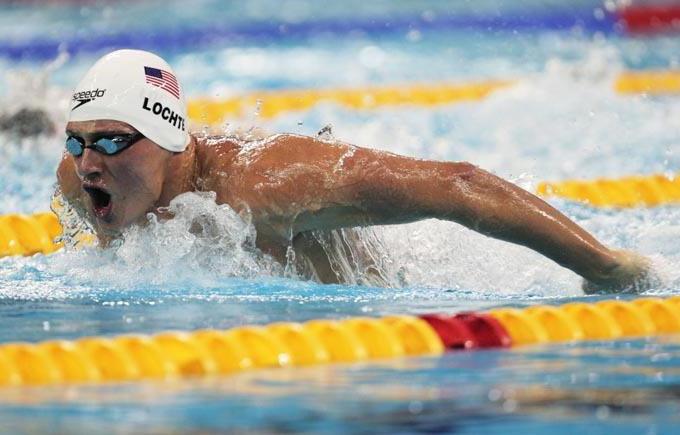
100 meter swimming record
What was the world record for 100 meters swimming and who set it? One of the most famous swimmers is who represented the United States in swimming competitions. He has quite a lot of records, most of which are related to butterfly and complex. During his career, Phelps was able to break world records 39 times. The most famous performance was at a distance of 100 meters at a competition in Rome in 2009. Then a real fight broke out between Phelps and Chavic, which led to the setting of several world records. The Serbian was in excellent physical shape and in the semi-finals he set new record, and in the final I wanted to win with a new result. However, the US representative showed phenomenal speed in the final, which led to his victory and the establishment of a current record of 49.82 at a distance of 100 meters.
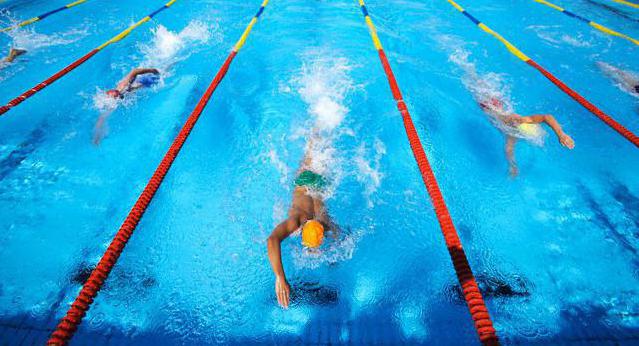
Freestyle
Swimming has always attracted quite a lot of attention due to the large number of distances and also because high speed that athletes can achieve. In 2009, 5 current freestyle records were set at once. Brazilian swimmer Cesar Cielo set records in the 50 (20.91) and 100 meters (46.91). Note that he surpassed the previous result at a distance of 50 meters by only 00.03 seconds - 20.91 current record. At the French Championships, Frédéric Bousquet (50-meter freestyle) showed a result of 20.94 seconds.
Records were also set by Paul Biederman in the 200 (1:42.00) and 400 meters (3:40.07), as well as by Zhang Lin in the 800 meters (7:32.12). Let us note that 2009 was the richest year in world records in swimming.
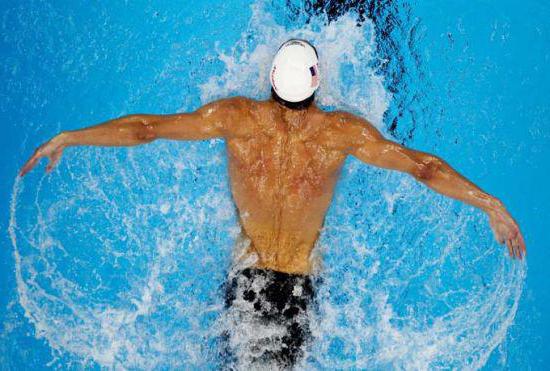
50 meter swimming record
Who set the world record for swimming 50 meters? Adam Peaty is a young British swimmer who has become European champion 8 times. Among his achievements (the athlete was born in 1994 and made his debut only in 2013) are world records in the 50 (26.42) and 100 meters (57.13). It is worth noting that previous records were also set by this swimmer. In 2016, he again proved his superiority. After he broke the previous record in the 100m, the crowd reacted strongly to the result, but Peaty did not immediately understand why there was such a reaction to his victory.
Quite a lot of hope is placed on this swimmer in the future, since, according to the sports community, he has not yet reached his best physical fitness. This was confirmed by his performance in Rio in 2016, which brought him gold and a new world record.
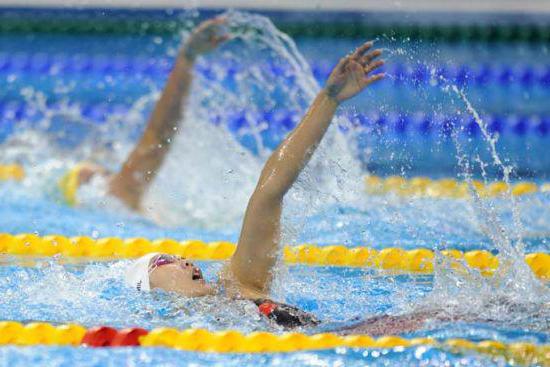
1500 meter swimming record
What is the world record for swimming 1500 meters? Athletes overcome long distances, more than 1000 meters, only in freestyle. In 2012, a record was set in the 1500 meters by Chinese swimmer Sun Yang - the current record is 14:31.02. An important point is that the previous best result also belonged to him. The new result is better than the previous one by more than 3 seconds.
Freestyle swimming records
It's time to talk about what the world records for freestyle swimming are. It always attracts quite a lot of attention, since there are quite a lot of distances in this discipline, some have best results. An important point is that most of the current records in this style were set in 2009 (for example, 20.48 at 50 m). Only at a distance of 1500 meters a new record was set in 2012 (14.10.10). This is due to the fact that recently athletes have improved their previous results by only a few fractions of a second - this point suggests that they will have to wait quite a long time for new world records.
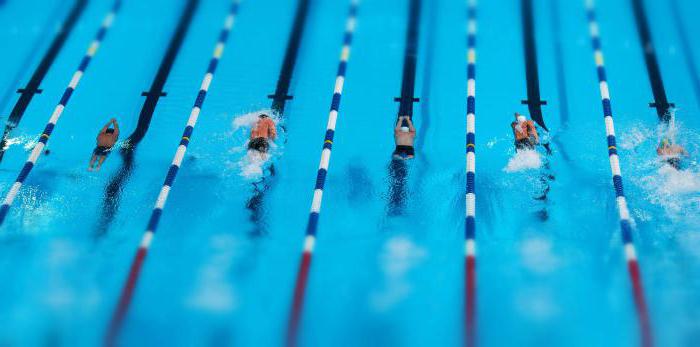
Current swimming records
If you pay attention to the current world records in swimming among men, you can note that most of them belong to representatives of the USA, Great Britain, Brazil, Germany and China. At the same time, the Americans are the holders of 9 current records out of 20 disciplines. This can be called an impressive result. In men's swimming, people from Russia do not have any current world records.
As for the performances of women, there is no obvious superiority here. The current records are held by women from the USA, Lithuania, Hungary, Sweden, Germany and Australia. Their results are close to those shown by the record holders among men. Moreover, many records were set between 2009 and 2016. Therefore, the upcoming competitions may also bring surprises.
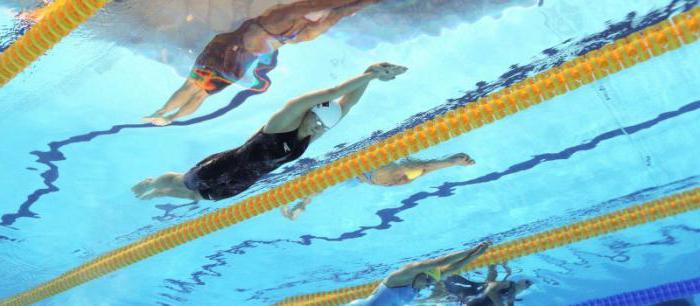
Competitions in Rio 2016
Even before the start of the competition in Rio de Janeiro, there were many scandals related to doping control among swimmers. After the start of the Olympics in Rio, 6 world records were broken in swimming in just two days, which brought quite a lot of impressions to all fans of this sport. Most of the records were set by women; among men, Briton Adam Peaty stood out with a new achievement in the 100-meter breaststroke. In the comments, the record holders indicated that the Olympics are a long-awaited event in their lives, for which they have been preparing for all 4 years. That is why the opening of the competition in Rio brought so many records. Hungarian athlete Katinke Hosszu not only set a world record (400m medley 4:26.36), but also the first Olympic gold in her career. Previously, she was able to win the World Championship 11 times, but she did not submit to the Olympics. She improved the previous result by more than 2 seconds.
In this section I will tell you how the training should proceed. Much of how you design a workout depends on your level of training and skill. I will ghost you examples of three types of training - for beginners, for amateurs and for professionals.
Whether you are a beginner swimmer or an international master of sports, your training is divided into three main parts.
First, the workout begins with a warm-up. Warming up is necessary to warm you and your muscles. If you don't warm up, there can be very disastrous consequences. For example, muscles can be pulled, or worse, torn. Let's remember our entire childhood, when we sculpted figures from plasticine. In this regard, your muscles are exactly like plasticine. If you warm up the plasticine and knead it, it stretches amazingly and does not tear, but if you take it cold and start pulling, it will immediately tear. Before warming up in the pool, it is advisable to stretch your muscles on land.
Secondly, the training consists of a main task. The main task is the most important part of the training. Typically, the main task consists of either a mode, or a series, or a large task. A mode is a type of task that consists of repeating the number of pools in a certain time (Example: 4x200 in the 4-minute freestyle mode. That is, we swim 4 times 200 meters each, and every 200 meters we must manage to swim in 4 minutes, since after 4 minutes we begin to swim for the 2nd time). The mode can also be with an interval, that is, we arrive and rest for a certain amount of time (interval). A series is a type of task that consists of a repeating number of pools (4x200m with random rest). A large task is a task with a large number of pools.
Thirdly, the training must have a purchase. This is necessary to avoid health problems. You must calm your pulse so that there are no heart problems.
Plan 1 (for beginners):
- 100-200 meters:
- 200-300 meters:
- 4x100 meters with 1 minute intervals:
- 200 meters:
Plan 2 (for amateurs):
- 200-300 meters:Warm-up (Swim slowly)
- 300-500 meters:Strength and technique task (Swim exercises on your legs, alternately changing hands, etc.)
- 4x100 meters with an interval of 45 seconds: Endurance challenge (Swim at a moderate pace)
- 300 meters:Purchase (Swim calmly, for these pools you must give your all)
Plan 3 (for professionals):
- 200-300 meters:Warm-up (Swim slowly)
- 200-300 meters: Warm-up 2
- 400-600 meters:Strength and technique task (Swim exercises on your legs, alternately changing hands, etc.)
- 6x100 meters in 2min mode: Endurance challenge (Swim at a moderate pace)
- 200 meters:Purchase (Swim calmly, for these pools you must give your all)
Happy training.
You can also visit our section of the site "
Athletics competitions became the most popular - 63 athletes from 9 countries took part in 12 events. The largest number of species - 9 - were won by representatives of the United States.
11 events were held at the Marble Stadium, which turned out to be inconvenient for runners. At the ancient Games, competitions were not held in a circle, but in a straight line (in races of more than 1 stage, participants at the opposite end of the stadium turned back). During the reconstruction, the stadium was not expanded, so the circular track turned out to be elongated with very steep turns, which reduced the speed. In addition, the track turned out to be too soft.
100 meter race
An American won the 100m and 400m races Tom Burke, the only one of the participants to use low start, which initially caused ridicule from the audience. The 800m and 1500m were won by the only Australian at the Games, while the 100m hurdles were won by an American Thomas Curtis.
All jumping events were won by the Americans - Ellery Clark(high and long jumps), Wells Hoyt(pole vault) and James Connolly(triple jump). The triple jump competition ended on April 6 earlier than other types of the Olympic program, and Connolly became the first Olympic champion of our time.
The first modern Olympic champion - James Connolly
Connolly jumped a full meter further than the French Olympic silver medalist Alexandra Tuffer. Harvard law student James Connolly traveled to Europe without permission from his professors. Furthermore- contrary to their prohibition. But when he returned home with a gold medal, the angry pundits changed their anger to mercy. Subsequently, the first Olympic champion became famous journalist and a writer. He was also offered an honorary doctorate from Harvard, but Connolly rejected this offer.
In discus throwing, which has ancient roots, the Greeks counted on victory: international competitions in it were not held before the 1896 Games, and Greek athletes prepared for several months in a training camp. However, taking the lead in the last attempt, the American won, having seen the discus thrown for the first time a few days before the competition. He also won the shot put; Having also taken 2nd place in the high jump, he became the most titled athlete of the Games.
Robert Garrett throwing the discus
Having learned that the Games program includes discus throwing, Garrett decided to take part in it, but since this sport was unknown in America, he began to make inquiries, and someone told him that at the Olympics they would use the same discus that ancient throwers used. Having become familiar with the throwing technique, Garrett I ordered a similar disc for myself and calmly trained with it at home. Arriving in Athens, Garrett I discovered that the modern disc is much lighter and more convenient in shape. It is so much easier and more convenient that it was not difficult for him to beat the favorites. True, after two attempts, the Greek was ahead with a result of 28 meters 95 centimeters Panagiotis Paraskevopoulos. But in the last attempt, the American threw a projectile weighing 1.923 kilograms at 29 meters 15 centimeters.
Interesting detail: Garrett came from New York to Greece at his own expense and also paid for the trip of three of his teammates.
Another event took place outside the stadium - a race along the legendary route from the city of Marathon to Athens (40 km), called the marathon. It was won by a Greek Spiridon Louis, who became a national hero in his homeland.
Spiridon Louis
Before the marathon, a representative of the organizing committee said that tomorrow there would be intense heat and a high risk of getting sunstroke. Several athletes immediately wisely refuse to participate in the competition and leave the Marathon. The next day at two o'clock in the afternoon, the athletes gathered at a small bridge, from which in 490 BC. e. started his run Phidipides. After a small ceremony, a shot is fired and a group of runners sets off on a forty-kilometer journey, surrounded by numerous mounted soldiers, cyclists and gigs. The heat is terrible.
Everyone runs in one group for about ten kilometers. Women, seeing marathon runners running past, cross themselves. The first checkpoint is in Pekermi. Everyone is given water and - surprise - wine! The two faint. At about the tenth kilometer the Frenchman Albin Lermusier rushes forward. Soon he is already thirty meters ahead of his closest rival - the Australian Flack, Olympic champion in the 800 and 1500 meters. Fifty meters Lermusier ahead of the Hungarian Kellner and American Black.
In Karvati, at the exit from the Marathon Valley, Lermusier finds out he's ahead Flack for a whole kilometer. The Greeks fell behind even more, the best of them was three kilometers behind the leader! But on the long climb beyond Megalo Revan the Frenchman's running becomes harder. Approaching the Spata plain, a little further than the thirty kilometer of the distance, Lermusier stops on the side of the road. His compatriot Gisel, who rides a bicycle nearby, rubs his feet with a special ointment. He runs again, but his impulse is broken and the rhythm of his running is lost. After two thousand meters there is a crash: Lermusier falls and loses consciousness.
At the thirty-third kilometer the race was led by Flack. After some time, a Greek appears a few tens of meters from him Spiridon Louis. With long, long strides he overtakes the Australian. Flack, seeing that he is being bypassed, cannot withstand the tension of the struggle and falls.
The Marble Stadium is already visible ahead. The king was informed that the Greek runner was in the lead. George I. A cannon shot is heard. Eighty thousand hearts beat in unison. Complete silence is broken by a cry of relief: almost black with dust, he ran onto the stadium track. Louis. The last lap around the stadium is both heaven and hell. The spectators jumped up from their seats. The air rang with cries of jubilation and joy. The judges rushed after the runner and reached the finish line with him. Two Greeks picked up the winner on their shoulders and carried him to the king.
A contemporary describes this event, which adorned the First Olympics:
"Thousands of flowers and gifts were thrown at the feet of the winner, the hero of the 1st Games. Thousands of doves carrying ribbons in the colors of the Greek flag rose into the air. People poured onto the field and began to rock the champion. To free Louis, the Crown Prince and his brother came down from the stands to meet the champion and they took him to the royal box. And here, to the unceasing applause of the public, the king hugged the peasant."
From the very beginning of the First Olympic Games, Greece was waiting for its hero. And so he appeared in the guise of a young letter carrier from the village of Maroussi near Athens.
Spiridon Louis became a national hero. He was the first modern athlete to receive the highest honors. The awards ceremony for the Olympic winners in all sports took place on the closing day of the Games. Repeating the ancient ceremony, a laurel wreath was placed on the champion’s head, and he was presented with a medal, a diploma and an olive branch cut in the “sacred grove of Olympia.”
All winners:
Running, 100 m (18 participants, 9 countries)
1. T. Burke (USA) - 12.0.
2. F. Hofmann (Germany) - 12.2.
3. A. Sokoyi (Hungary) - 12.6.
Running, 400 m (11 participants, 6 countries)
1. T. Burke (USA) - 54.2 (OR).
2. H. Jamison (USA) - 55.2.
3. F. Hofmann (Germany).
Running, 800 m (9 participants, 5 countries)
1. E. Flack (Australia) - 2.11.0.
2. N. Dani (Hungary) - 2.11.8.
3. D. Golemis (Greece).
Running, 1500m (8 participants. 5 countries)
1. E. Flack (Australia) - 4.33.2 (OR).
2. A. Vlenk (USA) - 4.34.0.
3. A. Lermusio (France) - 4.36.0.
Marathon running, 42,195 m (17 participants. 5 countries)
1. S. Louis (Greece) - 2.58.50.
2. X. Vasilakos (Greece) - 06/3/03.
3. D. Kellner (Hungary) - 3.06.35.
Running, 100 and hurdles (7 participants, 5 countries)
1. T. Curtis (USA) - 17.6 (OR).
2. G. Goulding (Great Britain) - 17.7.
High jump (5 participants, 3 countries)
1. E. Clark (USA) - 1.81 (OR).
2. J. Connolly (USA), R. Garrett (USA) - 1.65.
Pole vault (5 participants, 2 countries)
1. W. Hoyt (USA) - 3.30, (OR).
2. A. Tyler (USA) - 3.25.
3. E. Damaskos (Greece) - 2.85.
Long jump (9 participants, 5 countries)
1. E. Clark (USA) - 6.35 (OR).
2. R. Garrett (USA) -6.18.
3. J. Connolly (USA) - 6.11.
Triple jump (7 competitors, 5 countries)
1. J. Connolly (USA) - 13.71 (OR).
2. A. Tuffeli (France) - 12.70.
3. Y. I. Persakis (Greece) - 12.52.
Shot put (7 participants, 5 countries)
1. R. Garrett (USA) - 11.22 (OR).
2. M. Guskos (Greece) - 11.20.
3. G. Papasideris (Greece) - 10.36.
Discus throw (9 participants, 6 countries)
1. R. Garrett (USA) - 29.15 (OR).
2. P. Paraskevopoulos (Greece) - 28,955.
3. S. Versnes (Greece) - 28.78.
Successfully mastered construction technology in short time open water swimming pools.
August 6 has been prepared for all swimming enthusiasts 100 meter pool with real paths and bedside tables.
All day (from morning to evening) swims took place in Romantika, namely:
MORNING
Swimming competition . 100 meter swimming cup.
Each participant could enter:
at 100 meters - dolphin, 100 measures - on the back, 100 meters - breaststroke, 100 meters - freestyle.
Compared to last year, there has been noticeable progress in the number and level of participants.
In all heats a real struggle - the winners and runners-up are separated by tenths of seconds.
Athletes enter by team.
Each of the athletes brings points.
EVENING
Swimming competition - 4 x 200 m relay freestyle . Swimming Cup in a 100-meter pool.
We went to the start 8 teams. In this case, one of the commands ( "Rising stars") was fully staffed by young active swimmers of international level. This team was led by Nadir Nugaev’s dad, who is no stranger to swimming.
From the first meters a real struggle unfolded: the water was boiling and foaming.
Cm. PROTOCOL of the relay race "Bulls in a tomato" .
Swimming Cup results in the 100-meter pool.
Based on the results of two competitions, the following teams won 1st, 2nd, 3rd places in the Cup:
1 - "Fluffy Mink"
2 - "DJ"
3 - "Sprats in oil"
I want to note super breakthrough, success of the team from the city of Vysokovsk "Sprats in oil". This is the first success of athletes from Vysokovsk in swimming. Before this, a variety of peaks were conquered in the most different types sports But on this day the team came on the podium in the swimming competition. Well done boys!
Competition formula turned out to be successful.
Swimming enthusiasts enjoyed their time in the pool.
They promised to come again.
The organizers plan to develop the competition - Sailing Day. And it is possible to add night to this day.
We sincerely thank our sponsor - .
We sincerely thank the participants, judges, and fans.
See you again!